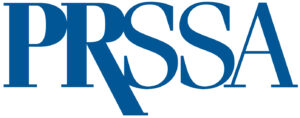Learn About Public Interest Communication at National Conference
If you don’t know much about public interest communication, you aren’t alone. The topic isn’t discussed much…yet. However, even if you haven’t learned about it in school, you’ve probably been exposed to more public interest messages than you think.

The next time you hear the phrase “designated driver,” you can thank the U.S. Designated Driver Campaign, created by the Harvard Center for Health Communication. In 1988, Harvard was looking for a way to reach the 15- to 24-year-olds who are most often affected by drunk driving fatalities, so the school turned to mass communication. They teamed with television stations ABC, NBC and CBS and major Hollywood movie studios to get the message out to young people. The turning point came when television stations began creating story lines for popular shows, like The Cosby Show and Cheers, that incorporated a “designated driver.” This marked the first time a health organization had joined with the media on a project of this size. And, as I’d be willing to bet any college student today knows, the project was hugely successful.
So that brings us to the definition of public interest communication. Ann Christiano, a presenter at the PRSSA 2011 National Conference and the nation’s first endowed professor in the subject, explains it as “an organization or group of organizations taking on an issue bigger than themselves.” She specifies that it isn’t non-profit communication. Public interest communication comes into play when an organization is communicating on behalf of some greater cause, not advocating for itself. Organizations that hope to enact social change want to connect with individuals, and tactics used by public relations professionals help achieve those ends, Christiano explains. “It is not a subset of public relations,” she said. “It is another way of using strategic communication.”
Not only is public interest communication an up-and-coming field of public relations, but it is also something this generation of young professionals should consider. The timing is right to be talking about this issue, Christiano said, because of this generation’s enthusiasm for social change. Citing events such as the recent Arab Spring, she said she hopes students will “see themselves” in this discussion at National Conference.
Join the public interest communication session as attendees explore this dynamic, exciting way to use strategic communication. Who knows, maybe the next “designated driver” campaign could be something you create. Review the PRSSA 2011 National Conference program for descriptions of all sessions and presenters.
What public interest campaigns have caught your attention? What ideas like “designated drivers” have stuck with our culture?
This is a guest post from 2011 National Conference Co-Director of Communications Amanda Lyon.

[…] Progressions.prssa.org […]